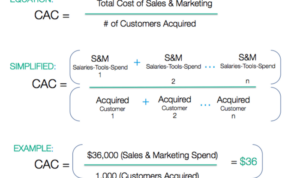Understanding Customer Journey sets the stage for this enthralling narrative, offering readers a glimpse into a story that is rich in detail with american high school hip style and brimming with originality from the outset.
Embark on a journey through the intricacies of customer interactions and behaviors, exploring the pivotal role of understanding the customer journey in shaping successful business strategies.
Introduction to Customer Journey: Understanding Customer Journey
The customer journey refers to the entire process that a customer goes through from the initial contact with a business to the final purchase and beyond. It includes all the touchpoints and interactions the customer has with the company along the way.
Understanding the customer journey is crucial for businesses as it allows them to gain insights into the needs, preferences, and behaviors of their customers. By mapping out the customer journey, businesses can identify pain points, improve customer satisfaction, and ultimately increase sales and loyalty.
Examples of Touchpoints in a Typical Customer Journey
- Website visit: When a customer first discovers a business through their website.
- Social media interaction: Engaging with a company’s social media posts or ads.
- Customer service inquiries: Contacting the company for support or information.
- Product purchase: Making a transaction and completing the purchase.
- Post-purchase follow-up: Receiving thank you emails, surveys, or offers after the purchase.
Stages of Customer Journey

In the customer journey, there are several key stages that a consumer goes through before making a purchase. These stages include awareness, consideration, decision, and retention.
Awareness
During the awareness stage, customers become familiar with a brand or product. They may not have a specific need yet, but they are learning about what is available in the market. Effective strategies for this stage include social media marketing, content creation, and search engine optimization to increase brand visibility.
Consideration
In the consideration stage, customers have identified a need or problem and are actively researching solutions. This is where businesses can provide valuable content such as comparison guides, product demos, and testimonials to help customers make an informed decision. Personalized email campaigns and retargeting ads can also be effective at this stage.
Decision
The decision stage is when customers are ready to make a purchase. Businesses can offer incentives such as discounts, free trials, or limited-time promotions to encourage conversion. Clear calls to action and a seamless checkout process are essential to help customers complete their purchase.
Retention
After a customer has made a purchase, the retention stage focuses on building loyalty and encouraging repeat business. Strategies for this stage include personalized follow-up emails, loyalty programs, and excellent customer service to ensure a positive experience and keep customers coming back.
Mapping the Customer Journey

Customer journey mapping is the process of visually illustrating the steps a customer goes through when interacting with a company or brand. It helps businesses understand the customer’s experience, pain points, and opportunities for improvement. Here’s how you can create a customer journey map:
Tools and Techniques for Customer Journey Mapping
To map out the customer journey effectively, businesses can utilize various tools and techniques such as:
- Persona Development: Create detailed customer personas to represent different segments of your target audience.
- Customer Data Analysis: Analyze customer data to identify patterns and trends in behavior.
- Customer Interviews: Conduct interviews with customers to gain insights into their preferences and experiences.
- Customer Touchpoint Analysis: Identify all the touchpoints where customers interact with your brand.
- Empathy Mapping: Understand the emotions and motivations driving customer actions.
Step-by-Step Guide to Create a Customer Journey Map
Here is a step-by-step guide on how to create a customer journey map:
- Define Your Objectives: Clearly Artikel the goals you want to achieve with the customer journey map.
- Identify Customer Personas: Develop detailed personas representing your target audience.
- Map Customer Touchpoints: Identify all the touchpoints where customers interact with your brand.
- Plot Customer Actions: Map out the steps customers take at each touchpoint.
- Highlight Pain Points and Opportunities: Identify areas of friction and opportunities for improvement in the customer journey.
- Create the Visual Map: Use a visual representation to illustrate the customer journey, including emotions and motivations.
- Iterate and Improve: Continuously update and refine the customer journey map based on feedback and data.
Customer Persona Development
Customer personas are fictional characters created to represent different types of customers that might engage with your business. These personas are based on research and data about your actual customers, helping you understand their needs, goals, behaviors, and pain points. By developing detailed customer personas, businesses can tailor their marketing strategies, product development, and customer experience to better meet the needs of their target audience.
Methods for Developing Detailed Customer Personas
- Conduct interviews and surveys with existing customers to gather insights about their demographics, preferences, and challenges.
- Analyze data from customer interactions, such as website behavior, purchase history, and feedback, to identify patterns and trends.
- Create fictional characters that represent different segments of your target audience, including details like age, occupation, interests, and goals.
- Use empathy mapping techniques to understand the emotions, motivations, and influences that drive customer decision-making.
How Customer Personas Influence Marketing and Product Development Strategies, Understanding Customer Journey
- Personalized Messaging: Customer personas help businesses create targeted marketing campaigns that resonate with specific customer segments, increasing engagement and conversion rates.
- Product Customization: By understanding the needs and preferences of different customer personas, businesses can develop products and services that address specific pain points and deliver unique value propositions.
- User Experience Design: Customer personas inform the design of user interfaces, customer journeys, and overall user experience, ensuring that products and services are intuitive and user-friendly for different audience segments.
- Customer Retention: Tailoring customer support, loyalty programs, and follow-up communications based on customer personas can enhance customer satisfaction and retention rates.





